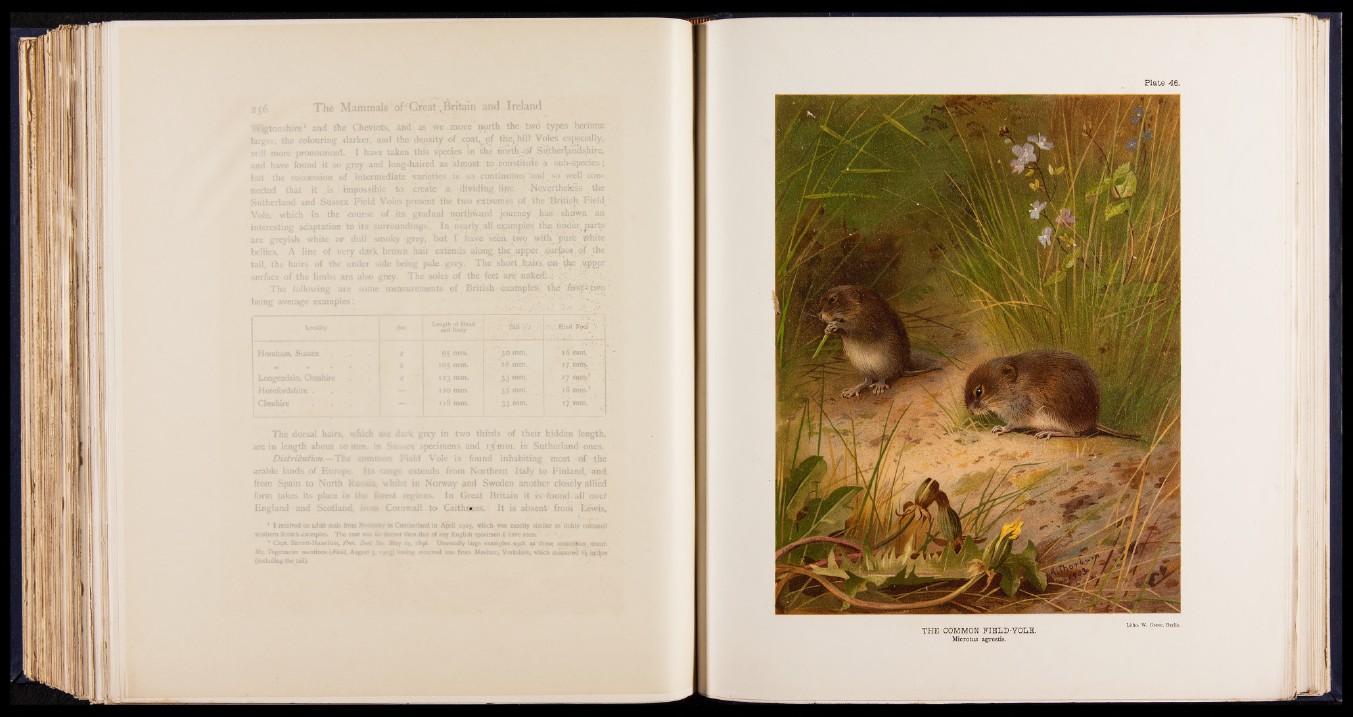
Wigtonshire1 and the Cheviots, and a we move 'north the two types become
larger, the colouring darker, and the density of coat,^ of tlie. hi 11 'Voles especially,
still more pronounced. I have taken this species in the north {óf Suthèrlahdshire,
and have found it so grey and long-haired as almost to constitute a ' sub-spedes;
but the succession of intermediate varieties . i s . so continuous'and so well connected
that it is impossible to create a dividing linte. Nevertheless v the
Sutherland and Sussex Field Voles present the tyro extremes ó f the British. Field
Vole,- which in the course of its gradual northward journey Has shown an
interesting adaptation to its surroundings. In nearly all examples the Under parts
are greyish white or dull smoky grey, but f have seen two with purè White
bellies. A line of very dark brown hair extends along,jthe upper su^fece.oif the
tail, the hairs of the under side being pale grey. The short. hairs: on the upper
surface of the limbs are also grey. The soles o f the feet are naked/.-; C i . ;
The following are some measurements of British examples, the nrst^two
being average examples:
Locality Length of Head.
and Body . .: Hind Foot *
Horsham, Sussex 9 5 mm: •30 mm. .xd'miri. ..
■ 8 } • 10 5 mm. . . 26 mm. ' 17 mmi:
Longendale, Cheshire . ' 1 123 mm. 33. trim. 7 .n?n).3 -
Herefordshire . . 12 0 mm. 3 3 nun - . 18 mm.’ .
Cheshire s 118 mm. 33 Him. 1 7 mm.
The? dorsal hairs, which are dark grey in two thirds of their hidden length,
are in length about io mm. in Sussex specimens and mm. in Sutherland ones.
D istribution.—The common Field Vole is found inhabiting most of the
arable lands of Europe. Its range extends from Northern Italy to Finland, and'
from Spain to North Russia, whilst in Norway and Sweden another closely allied
form takes its place in the forest regions. In Great Britain it is found, all over
iwall to Caithness. It is absent from Lewis,
1 I received an adult male from Nerberfoy in Cumberland in April 1965, which was exactly similar to richly coloured 1
southern Scotch examples. The coat was far denser than that of any English specimen I have Seen: '
5 Capt. Barrett-Hamilton, Proc. Zoai. St*. May 19, 1896. Unusually large examples .such as’ thesq sometimes,occur.
Mr. Tegetmeier mentions (.Field, August 5, 1903) having received one from Masham, Yorkshire, which measured 6^ inches
(including the tail).
THE COMMON FIELD-YOLE.
Microtus agrestis.